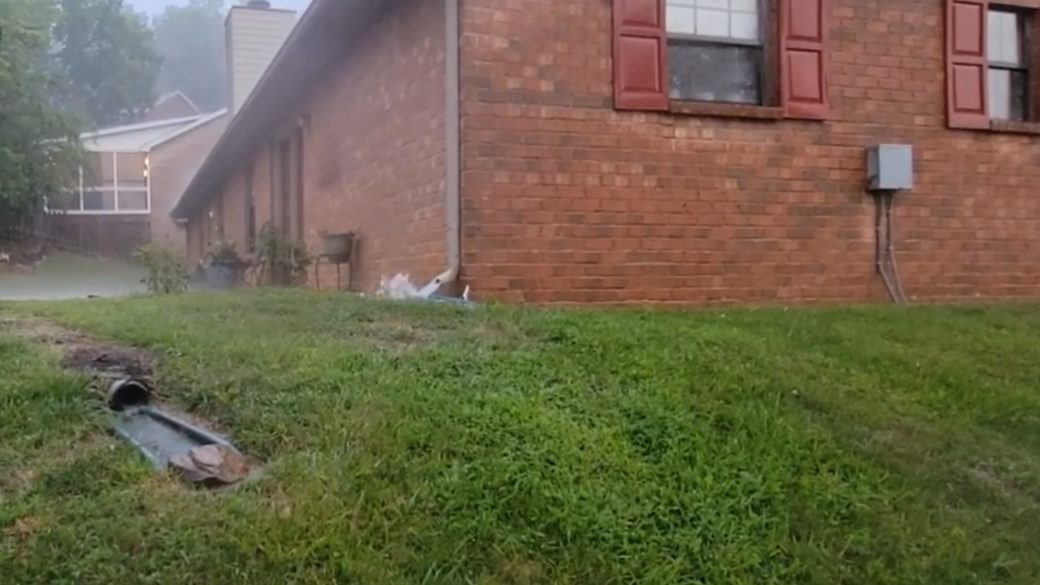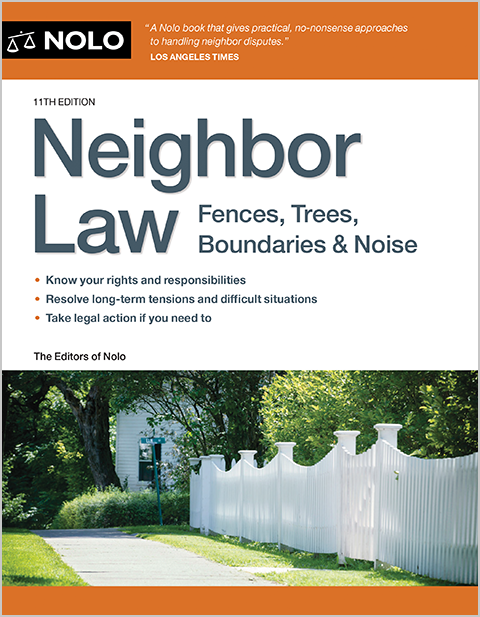Neighbors Gutter Drains on My Property
Have you observed that your neighbors gutter drains on your property? Dealing with this issue may be unpleasant since it could harm your grass, garden, or even the foundation of your house. You may take action to remedy the problem, though, without needlessly agitating your neighbor.
Understanding the Natural Flow Rule
If neighbors gutter drains on your property, the first thing you need to do is understand the natural flow rule. Water flows between properties adjacent to each other and is governed by the natural flow rule, a legal principle. A property owner has the authority to allow surface water to flow onto an adjacent property in its natural direction and amount under the natural flow rule.
When the Natural Flow Rule Applies
The natural flow rule is regularly applicable when surface water moves naturally across properties, like during a storm. Water that has been intentionally channeled or diverted by a property owner is exempt from the restriction.
Exceptions to the Natural Flow Rule
The natural flow principle may not always apply. For instance, a property owner could be responsible for any harm to their neighbor’s property if they make improvements to their land that disturb the normal flow of water.
Understand Your Property’s Drainage
Understanding your own property’s drainage is the first step in addressing a neighbor’s gutter that is overflowing into it. You may use this to figure out the origin and destination of the water. Assess the grading, or land slope, of your property. Your land should ideally slope away from your house so that any water that accumulates there may naturally drain away.
Poor grading on your land can lead to water accumulation, which your neighbor’s gutter draining into your property might make worse.
Check Your Property’s Grading
It’s crucial to examine your property’s grading if you fear that your neighbor’s gutter is dripping onto it. This entails figuring out the land’s slope and the direction that water flows away from your home. You may determine the slope of the ground using a long-board and level or by watching how water flows during a downpour.
You might need to regrade your yard if your property has poor grading in order to enhance the drainage. In order to trap and direct water, you may need to add soil to create a slope away from your home or construct a French drain or catch basin. The grading of your property may be evaluated by a landscaping expert or drainage specialist, who can then suggest the best course of action.
Check for Existing Drainage Systems
In addition to examining the grade of your land, you need to check if it already has drainage systems like catch basins or French drains. These devices are intended to divert water away from your home and capture it. You might need to install a drainage system if your property has inadequate drainage in order to fix the problem.
A gravel-filled trench with a perforated pipe that allows water to pass through it is called a French drain. The trench is filled with soil and the pipe is covered with additional gravel. Water enters the trench, passes through the pipe, and then drains from your home.
An example of a drainage inlet is a catch basin, which collects water and sends it to a drainage system. Catch basins can be constructed in places where water tends to collect, like close to the residence’s foundation.
Hire a Professional
Consider hiring an expert if you’re unsure how to grade your land or create a drainage system. A drainage specialist, civil engineer or landscaper can evaluate the drainage on your home and suggest the best solution.
More Neighbor Issues
Can I Throw Neighbors Tree Branches Back in Their Yard?
Can My Downstairs Neighbors Hear Me? Yes – Here’s why
Can I Move My Neighbor’s Stuff Off My Property?
Talk to Your Neighbor
If your neighbors gutter drains on your property, talking to your neighbor is the next step after determining the problem. Be kind and non-confrontational while approaching the topic of conversation. Describe the circumstance and share your worries. Your neighbor could be ready to take action to solve the issue if they weren’t aware that their gutters were the source of it.
Suggest Solutions
After you speak with your neighbor, provide suggestions for potential fixes. You could recommend them to divert their gutters and pour the water into a rain barrel or onto their own land. If they disagree, try to come to an amicable agreement that benefits both of you. For instance, you may offer to divide the expense of setting up a drainage system to solve the problem.
Follow Up
After speaking with your neighbor, check up with them to see if they’ve made any action to resolve the problem. You might need to take more measures if they haven’t.
Go to Your Homeowner’s Association for Help
You might be able to ask the homeowner’s association (HOA) in your community for assistance if a your neighbors gutter drains on your property. The HOA could have guidelines for drainage problems and might be able to arbitrate disputes between you and your neighbor.
Check the HOA’s Rules and Regulations
Check the HOA’s rules and regulations to determine if they handle drainage concerns before contacting them. If so, take note of any unique guidelines or specifications for submitting a complaint or asking for help.
Contact the HOA’s Board of Directors
Contact the HOA board of directors and look for advice if you’re unclear how to proceed. Ask them to mediate a conversation between you and your neighbor after outlining the scenario. The board might be able to provide recommendations or solutions to fix the problem.
Attend a Meeting
If the HOA holds regular meetings, go to one to discuss the problem and request help. You might be able to get assistance from neighbors who have gone through similar situations.
Contact the City or County to Find Out How Rainwater Disputes are Handled
You may need to seek help from your local government if you are unable to address the problem on your own or with the cooperation of your neighbor or HOA. For information on finding out how rainwater disputes are handled in your region, get in touch with your country or city.
Check Your Local Codes and Ordinances
There may be laws or regulations in your city or county that deal with drainage and runoff from rains. To find out whether your neighbor is breaking any laws, look at these. If so, you might be able to lodge a complaint with the county or city.
Contact the Appropriate Department
Determine what you can do by getting in touch with the office that handles rainwater disputes. They might be able to provide suggestions for how to solve the problem or mediate a conversation between you and your neighbor.
Check Local Ordinances
You might need to check into municipal regulations if your neighbor won’t comply or if the problem is seriously harming your property. Your neighbor could be breaking local regulations that limit how water can be released.
Research Local Ordinances
To learn more about your alternatives, speak to a real estate attorney or your local government. Find out about any municipal regulations that could be relevant to your case, such as those that forbid water from spilling onto adjoining homes. Make sure you comprehend the conditions and guidelines for bringing a lawsuit or submitting a complaint.
Notify Your Neighbor
Inform your neighbor of your plan to submit a complaint before initiating any legal action. This can lead people to act without consulting the legal system to resolve the problem. You might need to make an official complaint to your local authority if your neighbor won’t comply.
Seek Legal Advice
When you have neighbor issues, it is essential to know your boundary rights. The last thing you want is for your neighbor dispute to turn into an extensive and expensive lawsuit.
This Nolo Neighbor Law book gives you a full breakdown of how to handle neighbor issues, and specifically boundary lines. The book covers a wide variety of neighbor issues you’re likely to encounter, so you will get more than just one use out of this purchase.
View the Official 2023 edition – Neighbor Law
Consider seeing a real estate attorney if you’re thinking about taking legal action. They can assist you in navigating the court system and figuring out whether you have a case. They can also provide you advice on the possible expenses and consequences of filing a lawsuit.
Redirecting the Water
Redirecting the water from a neighbor’s gutter that is leaking into your own land is one method. There are several approaches you may take, based on your particular circumstances.
Install a Drainage System
Installing a drainage system on your property is one approach to collect the water and reroute it away from your home. Your land may need to be graded, catch basins or French drains installed. Although installing a drainage system might be expensive, it can also be a good way to solve the issue.
Install a Rain Garden
Installing a rain garden, that is a planted area that soaks up extra water, is an additional option. A rain garden may reduce soil erosion and remove toxins from the water while adding beauty to your yard.
Install a Dry Well
A dry well is a chamber beneath the earth that may retain water and enable it to drain into the soil gradually. If you just need to reroute a little quantity of water, this can be a practical alternative.
Installing a Barrier
A different choice to think about is building a fence between your land and your neighbor’s. By doing this, you can stop water from entering your property and causing damage.
Install a Swale
Installing a swale, a shallow ditch that may collect and guide water, is one potential solution. If you need to reroute a small quantity of water, a swale may be an efficient alternative. To help with water absorption and stop soil erosion, the swale might be lined with pebbles, gravel, or vegetation.
Install a Berm
Installing a berm, which is an elevated piece of soil that can stop water from pouring onto your land, is an additional option. In addition to being a beautiful addition to your yard, a berm may assist in stopping soil erosion. To aid with water absorption and stop soil erosion, the berm may be planted with plants.
Conclusion
Even though it can be an unpleasant circumstance to deal with a neighbor’s gutter draining onto your land, but there are actions you can do to correct it. Start with comprehending the drainage on your own land, then approach your neighbor in a polite and non-aggressive way. If your neighbor won’t comply, look up local laws to figure out whether they are breaking any.
To stop water from running onto your property, think about rerouting it or erecting a barrier. If everything else fails, consult a real estate attorney and, as a last option, think about taking legal action. You may discover a solution that benefits both you and your neighbor by using the methods listed above.



